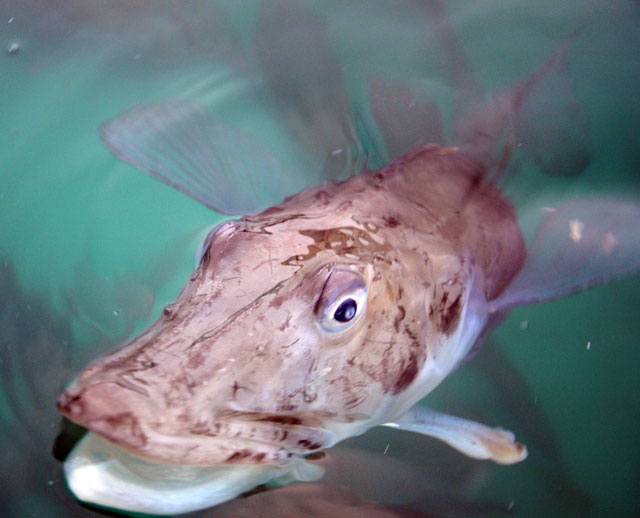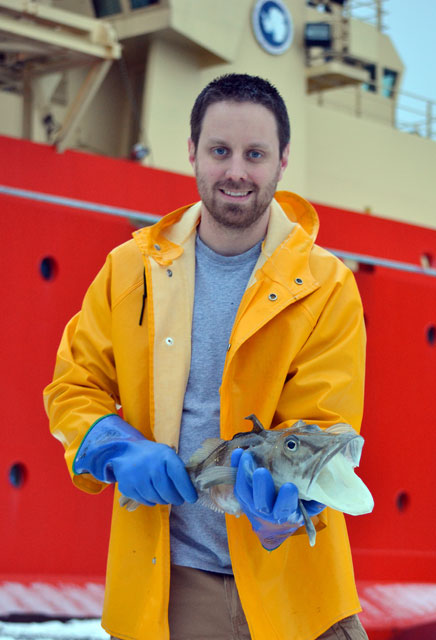|
Page 2/2 - Posted October 5, 2012
Icefish appear more tolerant of thermal changes than previously thoughtIn all three field seasons, the researchers collected tissues samples from icefish caught while trawling aboard the research vessel Laurence M. Gould They then developed software to analyze and compare the genetic expression between the two species. “That’s pretty exciting,” Postlethwait said. “We started basically at ground zero and we had to develop the biology and genomic infrastructure and bioinformatics from scratch. It’s pretty exciting that we’re at this stage. … We’re going to be able to make the comparison and learn what genes are expressed differently.” Two researchers wintered over at Palmer Station this year to continue to monitor the development of fish embryos, according to Grim. “We’re hopeful with their efforts that we can get them to more advanced developmental stages,” he said. Grim’s project, while separate from the collaboration between Detrich and Postlethwait, also focuses on gene expression associated with bone and cartilage production, but his research involves studying reactive oxygen species (ROS) in embryonic development. ROS are chemically reactive molecules that form as a natural byproduct in the normal metabolism of oxygen. They play an important role in cell signaling, as part of the cellular communication process that governs cell activity. Environmental stress can cause ROS levels to spike, leading to cellular damage. Grim is interested in how ROS production may vary between red- and white-blooded Antarctic fish, as well as how their antioxidant defenses to oxidative stress varies. Grim said there might also be a correlation between ROS activity and skeletal growth. One of the key questions in all three projects: Will warming in the Antarctic Peninsula affect embryo development? The Southern Ocean has already warmed an average 1 degree Celsius in the last half-century. “All of the developmental rates and all of the biological processes in these animals are going to be dictated by their environmental temperatures,” Grim said. Adult notothenioid fish have proven to be more tolerant to spikes in thermal temperature than researchers originally believed, Detrich noted. The same seems to hold true for the embryos so far, at least in experiments that turned up the water temperature by as much as 4 degrees Celsius. “They’re more tolerant than one might have thought,” said Detrich, whose own research also involves protein folding in Antarctic fish in addition to the thermal tolerance experiments. Proteins are behind many biological processes. As enzymes, they drive biochemical reactions that make biology work. They are the main constituent of muscles, hair, skin and blood vessels. As antibodies, they recognize intruders and prompt the immune system to get rid of the unwanted invaders. In order to carry out its specific function, each protein must take on a unique three-dimensional shape, in a process called folding. Detrich is particularly interested in how a complex called CCT chaperonin assists other proteins in the folding process, especially their role in the folding of tubulins that form microtubules. Microtubules are one of the components of the cytoskeleton, a structure that maintains cell shape and cell motility. Previous work has found that Antarctic fish CCT works very efficiently at the temperature at which the animal evolved, but suffers as it increases. “That’s very important information,” Detrich said. “It tells us that at some point, as temperature increases, we might expect to see a deficit in protein folding for Antarctic fish. That’s an interesting result that may prove harmful to notothenioid embryos and adults.” Changes in ocean temperature could have other effects, Grim noted, such as altering the fish growth cycle. “If the embryos even survive an increase in developmental rate, are they going to hatch out at a time when there’s not food available and they’re going to die once they hatch out?” he asked. Postlethwait has a different reason to be concerned about climate change affecting the Southern Ocean. His research into the Antarctic fish-human bone disease relationship may eventually lead to therapies to prevent or treat osteopenia. “I can see a trail that leads there, as we identify genes and gene pathways that have been altered in the light-boned icefish by evolution,” he explained. “If we find in a human being those same genes and gene pathways that have been altered over developmental time and differences between families that are resistant to or susceptible to osteoporosis, then the identification of those genes might suggest targets for substances that might up-regulate those genes to maintain bone mineralization as we get older.” So a threat to the Antarctic fish from climate change and other human pressures is also a loss to science, Postlethwait noted. “These animals are unique planetary resources to learn about things like osteoporosis. … As the water starts to warm, all of these animals are going to undergo stresses that are going to make a lot of them go extinct,” he said. “Those animals are unique, and once they’re gone, they’re gone forever. If we’re going to extract secrets from them, we need to do it before they’re gone.” NSF-funded research in this story: Bill Detrich, Northeastern University, Award No. 0635470 |



For USAP Participants |
For The Public |
For Researchers and EducatorsContact UsU.S. National Science FoundationOffice of Polar Programs Geosciences Directorate 2415 Eisenhower Avenue, Suite W7100 Alexandria, VA 22314 Sign up for the NSF Office of Polar Programs newsletter and events. Feedback Form |




